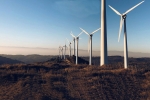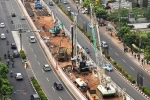This article has been translated by PwC Indonesia as part of our Indonesia Infrastructure News Service. PwC Indonesia has not checked the accuracy of, and accepts no responsibility for the content.
Bisnis Indonesia - Energi baru terbarukan: Sumut akselerasi proyek PLTA
13 May 2024
By Nyoman Ary Wahyudi
Bisnis, Medan – North Sumatra Provincial Government is eyeing energy potential from hydropower plants (PLTAs) in the region to supply sustainable clean energy.
This was revealed by Acting North Sumatra Governor Hassanudin who hopes that the utilisation of rivers as an energy source will be increasingly massive, similar to the accomplishments of Batu Gajah PLTA in Empus Village in Langkat Regency.
“We have many large rivers. We have to take advantage of them, including for electricity. Electricity is a basic necessity for the people,” he explained in is official statement on Sunday (12/5).
To accelerate the construction of hydropower plants in North Sumatra, Hassanudin has requested relevant agencies to gather data and identify locations of rivers with energy-generating potential.
This is not without reason. Hassanudin sees that North Sumatra has a large potential to develop new renewable energy (NRE) by utilising rivers in the province.
“We will collect data and identify locations of rivers with potential to generate energy, whether they are small or large. This will make it easier for investors or us to build micro-hydropower plants,” Hassanudin said.
Batu Gajah PLTA is an NRE power plant in North Sumatra.
This hydropower plant utilises the stream of Wampu River to drive its turbines to generate 16 megawatts (MW) of electricity.
The electricity of the PLTA owned by Thong Langkat Energi is then distributed to Langkat Regency and Binjai Regency as part of their commitment to promoting an eco-friendly electricity system in North Sumatra.
Batu Gajah PLTA Site Manager Roni Manampiring said that the capacity produced by the PLTA reached 20 kilovolts (kV).
The electricity is then distributed to Kuala, Marike, Tamunan, and Bukit Lawang.
“This supports Bukit Lawang as a tourism area that demands significant energy. Additionally, the local population has long faced electricity shortages. I hope this initiative can improve people's productivity,” Roni said.
However, PLTAs also present complex challenges, particularly during the dry season when water levels drop.
The Energy and Mineral Resources (EMR) Ministry is ensuring energy supply in several PLTAs as the dry season and El Niño approach.
These natural phenomena can lower the water level at PLTAs.
This can cause an electricity crisis and disrupt people’s activities, especially in the industry and business sectors.
“In case of El Niño or during the dry season, PLN must mitigate [the impact],” the Electricity Director General of the EMR Ministry Jisman Hutajulu said last week.
PT PLN Power Plant Management Director Adi Lumakso added that PLN has prepared various steps to anticipate potential disruptions to energy supply from the dry season and El Niño.
“Hence, we need to develop a comprehensive strategy for power plants, transmissions, and regulations,” he stated..
Next article: Govt encourages renewable energy development


















